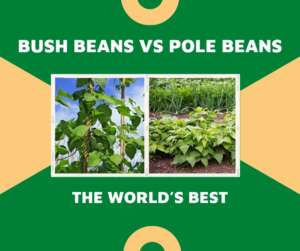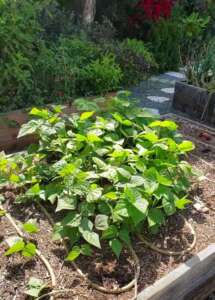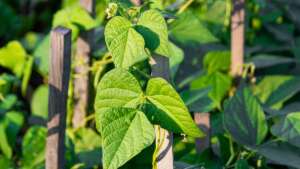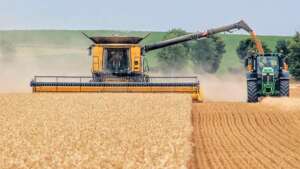Table of Contents
 Are you confused about choosing one to plant in your garden this season? Bush beans and pole beans are different in many ways. They have different growth patterns, tastes, and yields. Let’s compare in this article and remove your confusion to see which one is the best for your garden.
Are you confused about choosing one to plant in your garden this season? Bush beans and pole beans are different in many ways. They have different growth patterns, tastes, and yields. Let’s compare in this article and remove your confusion to see which one is the best for your garden.
Bush Beans Vs Pole Beans: Which is the best for your garden?
There are two types of beans: bush beans and pole beans.
Bush Beans

The name “bush bean” refers to the fact that they don’t need a trellis; they grow into bushes. The term “pole bean” refers to the fact that they need support (such as a trellis) to grow up instead of out. They also have larger pods and bigger seeds. Bush beans are smaller, but they produce more beans than pole beans.
Pole beans

Pole Beans have more pods per plant, but bush beans are easier to grow and have fewer problems with pests and diseases, so many gardeners prefer them for home gardens. Pole beans are great because they can be grown vertically, taking up less space.
Which shall you grow?
You can grow both types in the same garden. Just make sure that you plant different varieties of each so that they don’t cross-pollinate. If you do this, you’ll need to wait until fall before eating any of your beans because that’s when seed saving begins.
If you want to keep things simple, plant one variety of each type of bean in your garden this year.
Which type is best for the garden?
If you want to grow a vegetable garden but don’t have much space, then bush beans might be the way to go. Their compact size makes them perfect for small spaces and container growing. They also produce more pods per plant than pole beans do, making them a great choice for home gardeners who want to ensure plenty of fresh veggies on hand during the summer months.
Pole beans require a longer growing season than bush varieties, which means that they’re less productive in warmer temperatures or when your region experiences little or no rainfall. However, there are several advantages to using pole varieties over bush types:
They produce higher yields per plant than bush types do.
Their vines can be trained on trellises or poles, so they don’t take up valuable ground space.
Differences
The main difference between bush beans and pole beans is how they grow — and how much space they take up when they do so.
Bush Beans: Bush beans grow on bushes that stand about 2 feet tall; they’re usually harvested while they’re still green (before they turn yellow). These beans typically bear several pods at once and don’t need much staking or trellising to keep them upright as they grow. They’re also easier to pick than pole beans: You snip off the pods as needed — no need to pick them all at once!
Pole beans come in two types: climbing (also known as runner beans) or pole (also known as French or filet beans). Climbing beans need a trellis or fence to climb up; pole beans can be grown without support if you have enough space (about 20 feet for each plant).
Let’s face it: Pole beans are not always the most productive or tasty. Bush beans are a little more finicky, but they can be a real winner in your garden if you know what to do with them.
Points to understand
The first thing to understand about bush beans is that they’re not a single type of plant. There are many kinds of bush beans, and most of them produce squat and rounded pods rather than long and thin like pole beans. The best way to tell if what you have is a bush bean is to count how many seeds there are in each pod — if there are five to six seeds per pod, it’s probably a bush bean. If there are only two or three seeds per pod, it’s perhaps a pole bean (though there are exceptions).
The second thing to understand about bush beans is that they need support — either stakes or a trellis system — because their vines tend to flop over when they reach their full height (usually around eight feet). Without support, they’ll fall over and rot on the ground.
Thirdly, there’s the matter of timing.
We have concluded that you’ll have better luck with bush beans if you plant them sooner than later in the season when soil temperatures are cooler.
Growing conditions
Bush beans grow best in cool weather and prefer soil with good drainage. They grow well in raised beds that have been amended with compost or manure. If they have good drainage holes, Bush beans may also be grown in containers.
Pole beans need warm soil conditions to germinate properly, but they will tolerate cooler temperatures better than bush beans do once they sprout.
Amount of Care
- Beans need full sun and well-drained soil with a pH between 6.0 and 7.0.
- Beans will not tolerate standing water or poorly drained soils.
- Plant your beans in rows.
- They require regular watering during the growing season (especially when young).
- They need supplemental nitrogen fertiliser if grown for seed production.
Harvest

- Harvest bean plants when pods are full and green, but before they turn yellow. Beans left on the vine will continue to ripen, but the beans inside will lose their flavour and become tough and stringy.
- You can harvest bush beans while still on the vine or after being picked.
- To harvest bush beans while still on the vine, grab a handful of branches and pull gently. The beans should easily come off with their pods.
- To harvest bush beans after picking them, use sharp scissors to cut off each stem at its base, where it meets the plant’s main branch.
- If you have pole beans, you will have to harvest them when the pods are 12 inches long. You can tell if they’re ready by gently squeezing the pod between your thumb and finger. If it feels soft and gives easily, it’s time to harvest.
- You can pick them as they ripen if you want to save some for a later season pen.
- For bush beans, wait until the pods are about 6 inches long before picking them. Again, gently squeeze each pod to test for ripeness. If it feels soft, then you know it’s time to harvest.
Final words
After reading this article, you must be sure about the best choice in bush beans vs pole beans. We have covered all relevancies about varieties of beans, their growth process, and harvest. We openly welcome you if you would like to add more in relevancy.
